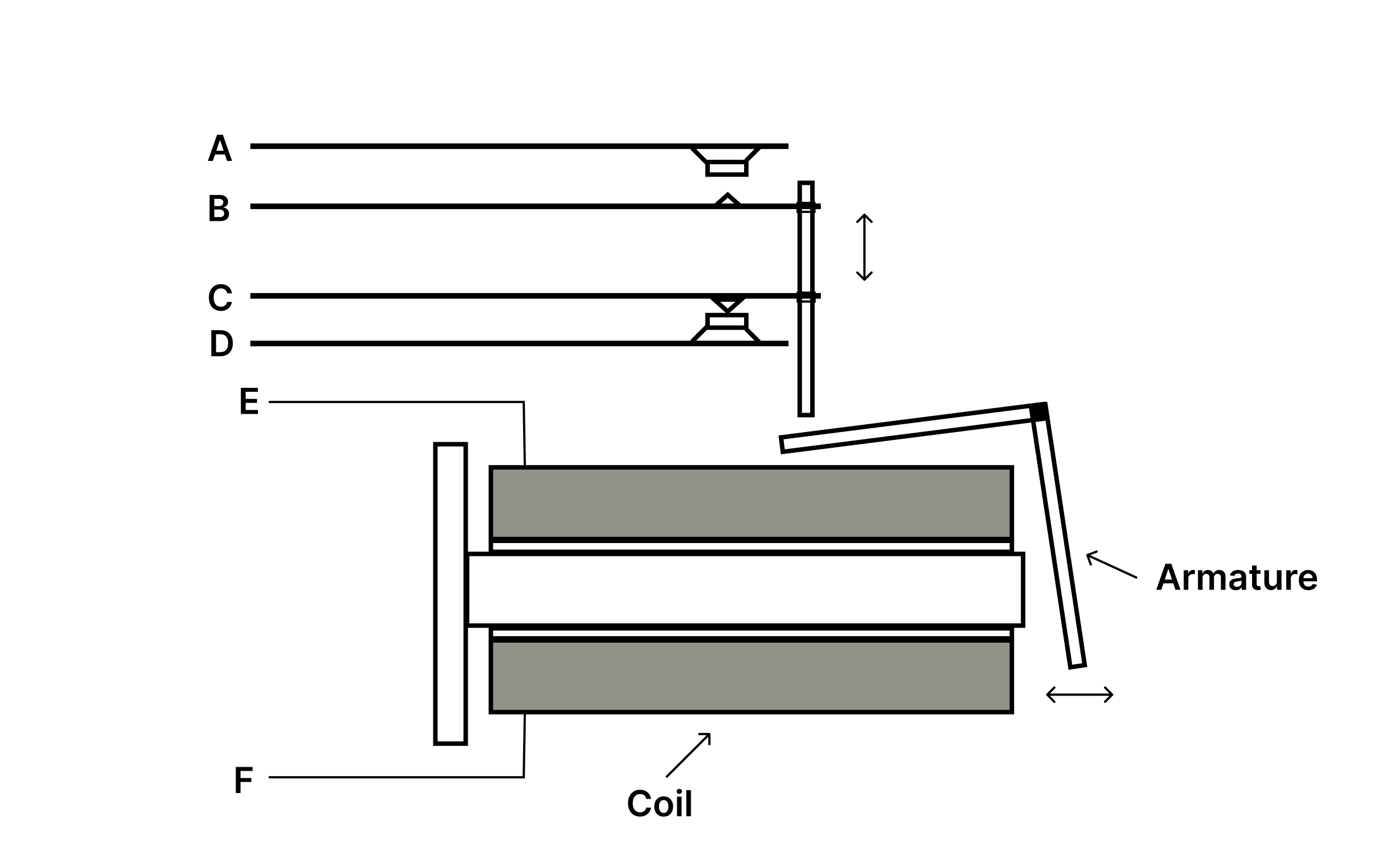Relays in Railroad Signaling
For many decades the interlocking function has been carried out by relay circuitry. The interlocking might consist of many hundreds or even thousands of relays appropriately interconnected to put together the safety logic conditions required. Although microprocessor based vital systems have been in use since the mid 1980s they have not become universally accepted in new applications. Relay circuits are still installed on many railroads and transit systems. Thus relay circuits are still important in their own right.
Even with microprocessors the logic uses the same fundamentals as relay circuits. Vital microprocessor logic is largely a direct translation of the relay logic. It is therefore important to understand the functions in relay logic, even if the application will use a microprocessor.
The Relay
A relay consists of a number of switches, or contacts, and one or more coils. The contacts are all operated simultaneously by applying a voltage to the coil. Each contact consists of two flexible contact arms, one of which may be fitted with a pad of graphite impregnated with silver.

Relay Contacts
The pair of arms act as a switch; if the two are not touching, as in the diagram above, the contact is open and no current can flow through the contact. If the two are pushed together so they touch, the contact will be closed and current can flow.
The movement of the arms is provided by the action of an electromagnet, formed by a metal core within the coil of the relay. The diagram below shows the principle of this action. It is assumed in this diagram there is no current flowing through the coil E/F. At the top are two contacts - A/B are shown open while C/D are shown closed.

Diagram of a common railroad signal relay.